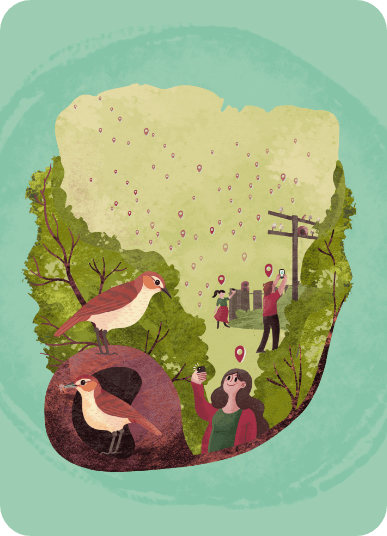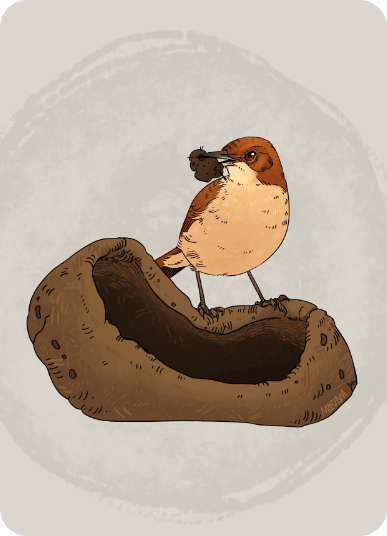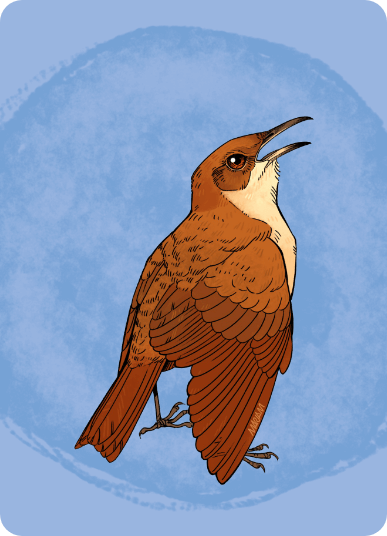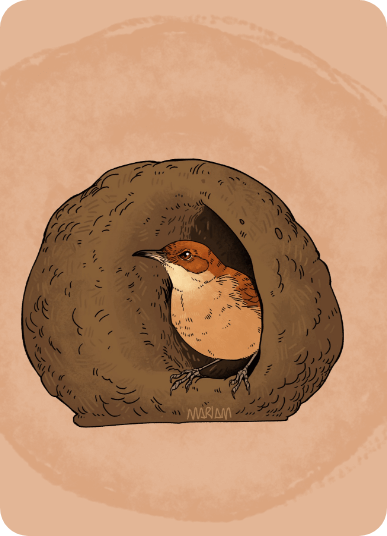2024 – Mentesana L, Casagrande S & Hau M.

Publicaciones
Baseline glucocorticoids alone do not predict reproductive success across years, but in interaction with enzymatic antioxidants.
ECOLOGY AND EVOLUTION
2024 – Taff C, Baldan D, Mentesana L, Ouyan J, Vitousek M & Hau M.
Endocrine flexibility can facilitate or constrain the ability to cope with global change.
Philosophical Transactions of the Royal Society B
2023 – Huge AC, Adreani NM, Colombelli-Négre D, Akçay C, Common LK & Kleindorfer S.
Age effects in Darwin’s finches: older males build more concealed nests in areas with more heterospecific singing neighbors.
Journal of Ornithology
2023 – Soares L, …, Mentesana L, … & Ribeiro Martins PV.
Neotropical ornithology: Reckoning with historical assumptions, removing systemic barriers, and reimagining the future.
Ornithological Applications
2022 – Adreani MN, Valcu M, Citizen Scientists & Mentesana L.
Asymmetric architecture is non-random and repeatable in a bird’s nests.
Current Biology
2022 – Mentesana L & Hau M.
Glucocorticoids in a warming world: Do they help birds to cope with high environmental temperatures?
Hormones and Behavior
2022 – Malkoc K, Mentesana L, Casagrande S & Hau M.
Quantifying glucocorticoid plasticity using reaction norm approaches: There still is so much to discover!
Integrative and Comparative Biology
2022 – Guggenberger M, Adreani NM, Foerster K & Kleindorfer S.
Vocal recognition of distance calls in a group-living basal bird: the greylag goose, Anser anser.
Animal Behaviour
2022 – Theuerkauf J, Villavicencio C, Adreani MN, …, Mentesana L, … & Masello JF.
Austral birds offer insightful complementary models in ecology and evolution.
Trends in Ecology and Evolution
2022 – Kleindorfer S, Colombelli‐Négrel D, … & Adreani NM.
Functional traits and foraging behaviour: avian vampire fly larvae change the beak and fitness of their Darwin’s finch hosts.
Functional Ecology
2021 – Mentesana L & Adreani NM.
Acute aggressive behavior perturbates the oxidative status of a wild bird independently of testosterone and progesterone.
Hormones and Behavior
2021 – Mentesana L, Andersson MN, Casagrande S, Goymann W, Isaksson C & Hau M.
Natural variation in yolk fatty acids, but not androgens, predicts offspring fitness in a wild bird.
Frontiers in Zoology
2021 – Kleindorfer S, Common LK, O’Connor JA, Garcia-Loor J, Katsis AC, Dudaniec RY, Colombelli-Négrel D & Adreani NM.
Female in-nest attendance predicts the number of ectoparasites in Darwin’s finch species.
Proceedings of the Royal Society B
2021 – Colombelli-Négrel D, Hauber ME, Evans C, Katsis AC, Brouwer L, Adreani NM & Kleindorfer S.
Prenatal auditory learning in avian vocal learners and non-learners.
Philosophical Transactions of the Royal Society B
2020 – Mentesana L, Moiron M, Guedes E, Cavalli E, Tassino B, Adreani MN.
Defending as a unit: sex-and context-specific territorial defence in a duetting bird.
Behavioral Ecology and Sociobiology
2020 – Adreani MN, D’Amelio PB, Gahr M & Ter Maat A.
Life-stage dependent plasticity in the auditory system of a songbird is signal and emitter-specific.
Frontiers in Neuroscience
2020 – Norte AC, Margos G, …, Mentesana L, …, & Lopes de Carvalho I.
Host dispersal shapes the population structure of a tick‐borne bacterial pathogen.
Molecular Ecology
2019 – Mentesana L, Isaksson C, Goymann W, Andersson MN, Trappschuh M & Hau M.
Female variation in allocation of steroid hormones, antioxidants and fatty acids: a multilevel analysis in a wild passerine bird.
Journal of Avian Biology
2018 – Adreani NM, Goymann W, & Mentesana L.
Not one hormone or another: aggression differentially affects progesterone and testosterone in a South American ovenbird.
Hormones and Behavior
2017 – D’Amelio PB, Klumn M, Adreani NM, Gahr M & Ter Maat A.
Individual recognition of opposite sex vocalizations in the zebra finch.
Scientific reports
2016 – Gill LF, D’Amelio PB, Adreani NM, Sagunsky H, Gahr M & Ter Maat A.
A minimum‐impact, flexible tool to study vocal communication of small animals with precise individual‐level resolution.
Methods in Ecology and Evolution






